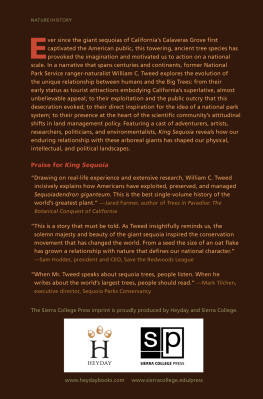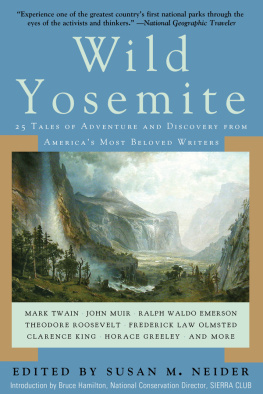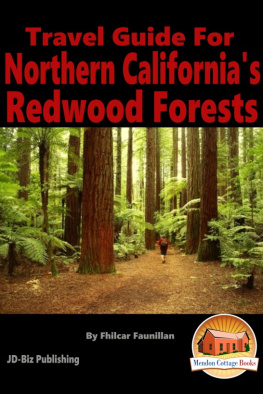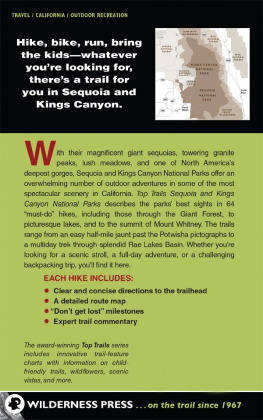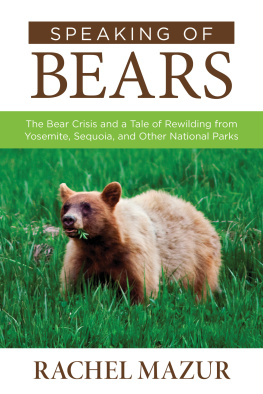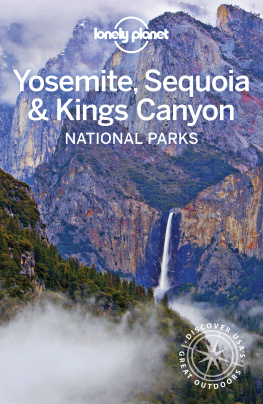King Sequoia


This Sierra College Press book was published by Heyday and Sierra College.
2016 by William C. Tweed
All rights reserved. No portion of this work may be reproduced or transmitted in any form or by any means, electronic or mechanical, including photocopying and recording, or by any information storage or retrieval system, without permission in writing from Heyday.
Library of Congress Cataloging-in-Publication Data
Names: Tweed, William C., author.
Title: King sequoia : the tree that inspired a nation, created our national
park system, and changed the way we think about nature / William C. Tweed.
Description: Berkeley, California : Heyday, [2016] | Includes bibliographical
references and index.
Identifiers: LCCN 2015049651| ISBN 9781597143516 (pbk. : alk. paper) | ISBN
9781597143561 (e-pub)
Subjects: LCSH: Coast redwood--California--History. | Sequoia National Park
(Calif.)--History.
Classification: LCC SD397.R3 T84 2016 | DDC 634.9/7580979486--dc23
LC record available at http://lccn.loc.gov/2015049651
Cover Art: Doug Leen and Brian Maebius, www.rangerdoug.com
Cover Design: Diane Lee
Cone Illustrations: Joe Medeiros
Interior Design/Typesetting: Leigh McLellan Design
King Sequoia: The Tree That Inspired a Nation, Created Our National Park System, and Changed the Way We Think about Nature was published by Heyday and Sierra College. Orders, inquiries, and correspondence should be addressed to:
Heyday
P.O. Box 9145, Berkeley, CA 94709
(510) 549-3564, Fax (510) 549-1889
www.heydaybooks.com
10 9 8 7 6 5 4 3 2 1
D o behold the King in his glory, King Sequoia!
JOHN MUIR, 1870
Contents

Foreword
M any years ago, when I was a young ranger-naturalist at Devils Postpile National Monument, my boss announced that the brass were coming for an inspection tour. Our tiny monument was managed under the distant Sequoia and Kings Canyon National Parks, and the visiting party included Ranger William Tweed. My supervisor told us to look sharp and to polish our badges and belts. As they still do today, our official National Park Service uniforms bore insignias with images that represented various aspects of the protected lands. The shoulder patch, shaped like an arrowhead to reflect the rich historical components of the service, featured the American bison and the sequoiarepresenting our animals and plants, respectivelyboth standing proudly in front of a majestic snow-clad mountain. Our belts and the bands of our flat-brimmed hats were stamped with sequoia cones and foliage. As a biologist and a Californian, this iconography resonated with me, although it wasnt until I read the book you hold in your hands that I understood why these giant trees, which grow naturally in only one state, graced the uniforms worn by all NPS employees across the nation.
At the time, my work was to interpret the geology of the spectacular volcanic columns of the Postpile, tucked high in the Sierra Nevada within a lodgepole pine and red fir forest. As a new ranger, I worried that Tweed, an interpretive specialist for the parks, would scrutinize my knowledge and teaching style. Thankfully, my worries were put to rest when this short visit by the Sequoia-Kings crew turned out to be filled with only grace and enthusiasm. More than three decades later, I still reflect on this experience as both enriching and enjoyable.
Now, after a long career of teaching college botany and ecology, my path once again crosses Tweeds, and I find myself thoroughly enjoying this opportunity to write a foreword to his newest book, which the Sierra College Press actively sought to copublish with the great folks at Heyday. This book represents the fifth such collaboration of Heyday and SCP, a partnership that has benefitted from the latters focus on the Sierra Nevada and the formers stellar efforts of celebrating California as a whole, particularly its rich history, culture, and natural history. This latest copublication has produced a wonderful book that serves those interested not just in California and the Sierra Nevada specifically but also in the larger history of how modern humans interact with the natural world. This book is not so much a story of the sequoia itself as a story about what the trees have meant to people, and how this relationship has shaped the futures of both California and the United States. It is not coincidental that we timed the release of this book to acknowledge and celebrate the proud centennial of the establishment of the National Park Service.
Sequoias and their relatives flourished widely during the Mesozoic Era, more than seventy million years ago, along with dinosaurs and flying reptiles. By the time North Americas earliest humans arrived in California, the once broadly distributed trees had retracted significantly, and by 10,000 years ago, after the last great ice age, there remained in America only two long assemblages of sequoia descendants, both in what would eventually be called California. One hugged the foggy Pacific coastline and the other preferred the sunny western slopes of the Sierra Nevada. These giants thrived, without humans, for a very, very long time, and so a complete account of their existence would make for a very different book. Even a comprehensive history of just human interaction with sequoias would need to cover several thousands of years, and although we have some stories passed down through the generations of native groups who lived and traveled along the lengthy band of giants, we have lost most of the experiences, tales, and wisdom of the first peoples to have walked in the shadows and sunlit reflections of these mountain forests.
What we do havethat which can be verified with historical writings, drawings, paintings, and photographsis a story less than two centuries old. But what a story it is! In this book, Bill Tweed takes us on a thorough and richly documented tour, beginning with Euro-Americans first encounters with the trees and the subsequently convoluted, if not laughable, competition to name this newly discovered species. Spanning the early days of Yosemite and Calaveras through the modern era, his story leads us not only through 250 linear miles of the Sierra but also throughout California, around the Horn, back to the East Coast, well into Europe, and even around the world to New Zealand. Bills tour introduces us to scientists, scoundrels, and entrepreneurs, to artists and altruists, and to philanthropists and politicians. It teaches us something about history, art, science, and literature, and much about ourselves. Many a familiar name will play on the sequoia stage: Muir, Clark, Roosevelt, Olmsted, Grosvenor, Mather, Rockefeller, Clinton, and both Bush presidents.
This story also details the horrific injustices exacted upon these trees in the late nineteenth and early twentieth centuries: excavations, tunnels, slices, and slabs removed out of simple curiosity and for short-term profit. Mammoth trees, 2,000 years old, were skinned alive and left to die. Entire groves were slaughtered and carted away for grape stakes. Contrast this with the giant sequoias that now co-reign, with the coast redwood, as the California state tree, that are protected and revered in state and federal reserves throughout the Sierra, and that proudly adorn the uniforms of national park employees across the nation.
Next page
